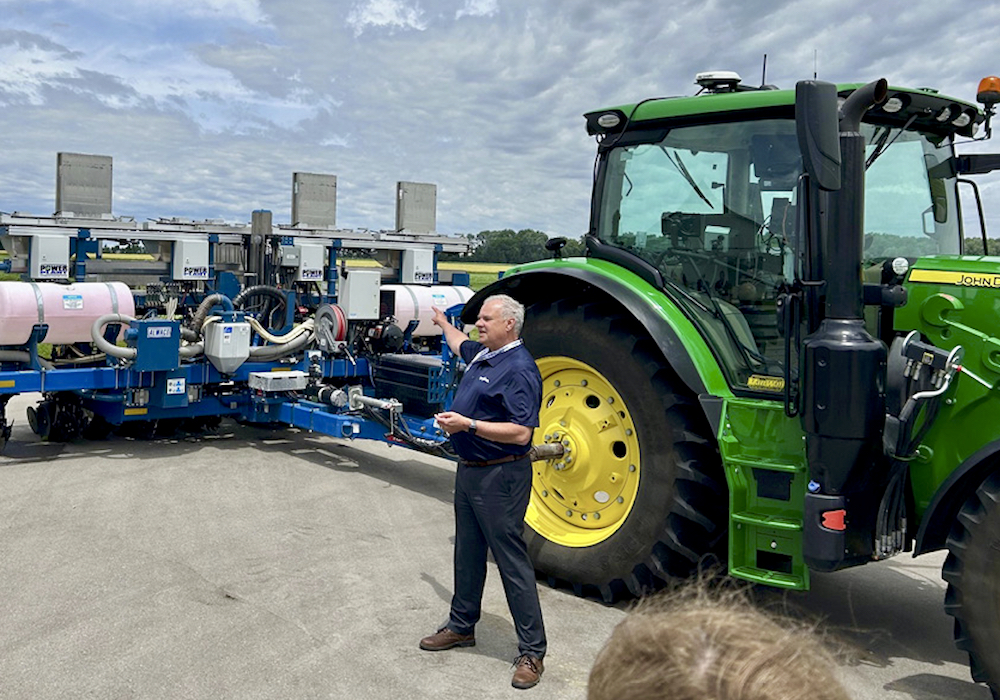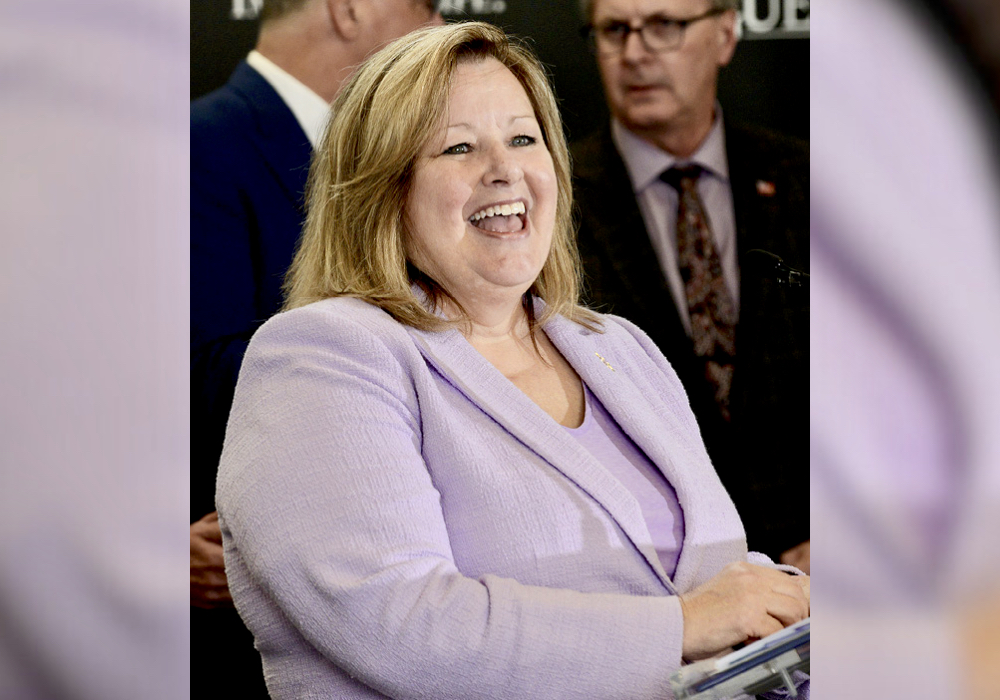Syngenta celebrates R&D investments at Arva

Syngenta has reopened its Arva, Ont., research centre after upgrading laboratories, buildings and equipment.
Read Also


Q&A with Ontario’s Minister of Rural Affairs
Newly appointed Minister of Rural Affairs Lisa Thompson wasn’t surprised that Premier Doug Ford prioritized rural affairs as a new…
The official opening on June 25 celebrated the first major interior upgrade since the facility opened in 1989, but for many in attendance, the biggest cause for excitement was the state-of-the-art PowerPlant research planter parked outside.
Why it matters: Crop research facilities help develop and prove the performance of new crop hybrids and varieties in areas where they are grown.
Built by Iowa-based company Almaco, the PowerPlant is one of 22 purchased and deployed over the past two years by Syngenta across North America in an effort to standardize the planting, monitoring and harvesting equipment in use by its research teams.
The interior upgrades and the equipment fleet replacements are part of what Syngenta says is an ongoing US$1.4 billion annual commitment to research and development.
Promoted as the “grand reopening” of the Arva R&D Innovation Centre, the event showcased approximately $2 million worth of interior renovations and lab upgrades. The new planter and other equipment purchases were celebrated equally by a number of the approximately 70 Syngenta employees for whom Arva serves as home base.
Steve Sterchi, from the hub of Syngenta North America’s research facility network in Malta, Illinois, leads the company’s product development team for North America. He said the Arva location “is part of an ecosystem that we’ve built out over the last few years” that aims to provide “speed, precision and power” in the introduction of new crop genetics and crop protection technologies.
Matt Rundle, a product placement specialist at Arva whose team analyzes test plot data on crop varieties, says the PowerPlant has potential to enhance those three areas when bringing new crop genetics to the market.
“These investments (the planter and an automated eight-row plant stand analyzer) will improve the quality of the data we’re using for those decisions and improve the efficiency of bringing varieties to market,” Rundle said.
Research planters typically require one or more technicians to sit on the machine and dispense packets of seed. The PowerPlant is completely automated, with specially designed packets that can be arranged by the planter’s computer and opened and dispensed without human help. Each packet has a barcode to track where and how it was planted.
Research associate Bryan Van Oostveen, a veteran operator of research planters for Syngenta, says he’s “now watching screens instead of watching the rows” as the plots are established.
From his Arva base this year, he oversaw the planting of 18 corn research plots on cooperating farms stretching from Wallaceburg to Sunderland. Given the wet weather, those planting dates ranged from mid-April to early June.
With different elements of the machine powered by the tractor’s hydraulics, electrically through a generator on the tractor, or by air from a compressor in the tractor, there’s significant complexity in maintaining precise depth and seed drop. But Van Oostveen said the enhanced precision afforded by the new machine will “reduce end-row effects and increase the uniformity of our plots.”
An on-board modem on the PowerPlant relays information about the planting operation in real time as the seed goes in the ground. By the time Van Oostveen gets off the tractor, that data has been compiled in a report for the Arva team.
“That’s something we didn’t even dream of 15 years ago.”
Soybean breeder David Lee, who started working at the Arva facility 31 years ago, joked that he used to operate a research planter but now his bosses only allow him to work the ground in preparation. He shared enthusiasm about the quality and uniformity of the data that will be available due to Syngenta’s upgrade and standardization of the research equipment fleet.
Lee was one of the presenters during the reopening, and said one of the things he’s most excited about is an upgraded protein/oil analysis system on the research combine and in the lab.
In the past, due to the hands-on nature of collecting and transporting samples, it could sometimes take until January to have all the research soybean samples cleaned, sorted and eventually analyzed for protein and oil content. Often, those varieties missed a window of opportunity for early replanting at Syngenta research farms in Puerto Rico or Chile.
With a new on-combine protein/oil analyzer and coordinated equipment in the Arva lab, the decisions made by the soybean researchers could now happen almost in real time, Lee explained.
Situated on 100 acres, the Arva facility houses a 10,000 square foot machinery shed and workshop, 10,000 square feet of seed processing equipment and storage, and 10,000 square feet for the lab and office.
“It has been mainly used as an R&D site for a number of years but we’re now looking forward to doing more commercial events,” said research station manager Heather Duncan.
Dan Wright, head of Syngenta Seeds Canada, shared Duncan’s enthusiasm about the potential to welcome farmers to meet with the company’s business and R&D teams in the newly renovated space.
“We can sit together at that table and have lunch together,” he said, gesturing to the staff kitchen and lunchroom area. “For me, that’s the most important thing that we’ll be able to do here – that collaboration.”
Source: Farmtario.com

